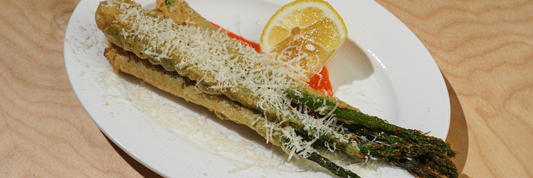Not every biodegradable material is compostable. So, what are exactly compostable materials? What are common compostable types? Explore in today article.
What Are Compostable Materials?
Compostable materials are the materials that can be broken down by microorganisms into a nutrient-rich substance called compost, which can then be used to improve soil health and fertility. This process is called composting, and it is a natural way to recycle organic waste.
What Are Features of Compostable Materials?
Here are some of the key characteristics of compostable materials:
- They are made from natural materials, such as plant-based fibers or starches.
- They are biodegradable, which means that they can be broken down by microorganisms over time.
- They decompose quickly and completely under the right conditions, typically within 90 to 180 days in a commercial composting facility.
- They do not release harmful toxins or pollutants into the environment when they decompose.
Is Compostable the Same as Biodegradable?
Both two term compostable and biodegradable involve materials breaking down but they are not the same. In general, all compostable materials are biodegradable, but not all biodegradable materials are compostable. Here are the break downs:
Compostable
- Specific: Refers to materials that decomposes completely into a nutrient-rich substance called compost under controlled conditions (usually in a composting facility) within a specific timeframe (typically 90-180 days).
- Composition: Usually organic matter like plant-based fibers and starches.
- Benefits: Creates valuable compost for soil health and fertility, reduces waste going to landfills.
- Examples: Food scraps, yard waste, some paper products, certified compostable bioplastics.
Biodegradable
- Broader: Describes any material that can be broken down by microorganisms eventually, but the timeframe can be unpredictable and much longer than composting.
- Composition: Can be organic or synthetic (like some "biodegradable" plastics).
- Benefits: Reduces waste overall, but may not create usable compost and could leave behind microplastics or other harmful residues.
- Examples: Food scraps, some types of biodegradable plastic (check certifications!), natural fabrics like cotton and wool.
Related: What Are the Differences Between Compostable vs Biodegradable?
What Types of Materials Are Compostable?
Wether you are running a food business or individual, understanding different types of compostable materials is the first step to start composting practice. Here are different types of compostable materials that you need to know.
Backyard Compostable vs Industrial Compostable
There are two main types of composting: backyard and industrial composting.
- Backyard Compostable: These materials decompose quickly (within 3-6 months) in a home composting bin or pile under ideal conditions (moisture, aeration, temperature). Examples include food scraps, fruit and vegetable peels, coffee grounds, tea bags, cardboard, and shredded paper.
- Commercially Compostable: These materials require industrial composting facilities with higher temperatures and specific processing to decompose within 90-180 days. Examples include bioplastics like PLA and some compostable tableware.
Related: Understanding and Instruction for Composting at Your Restaurant
What Are Common Compostable Materials?
The compostable materials can be group by their compostability from easy to complex.
Easily compostable
- Cellulose: The natural form found in plants readily decomposes in backyard compost. However, check for "compostable certified" labels on cellulose-based products like bioplastics for certainty.
Learn more about Cellulose Packaging
- Bamboo: Excellent for both backyard and commercial composting due to its natural fast decomposition.
Requires industrial composting
- Wheat Straw Fiber: Decomposes faster than standard plastics but needs high temperatures and controlled conditions of industrial composting facilities.
- Bagasse - Sugarcane Fiber: Similar to wheat straw fiber, it takes longer than typical backyard compost materials and benefits from industrial facilities
- PLA: Standard PLA can be commercially compostable if certified, but backyard composting might not be effective. Look for "compostable certified" labels to ensure it will break down efficiently and safely.
- tPLA and cPLA: Modified versions of PLA typically require industrial composting due to slower breakdown in typical compost piles.
Limited backyard composting
Recycled Paper: Uncoated and uncolored cardboard and paper can be composted in small amounts in a backyard bin, but they take longer than many other materials and can disrupt moisture balance
What Are Non-Compostable Materials?
To keep your compost healthy and avoid attracting unwanted pests or slowing down the decomposition process, it's important to know what not to add. Here are some common non-compostable materials:
Food Scraps
- Meat, dairy, and eggs: Attract pests and take too long to decompose, creating unpleasant odors.
- Oily or greasy foods: Can slow down decomposition and make your compost pile attract unwanted creatures.
- Citrus peels and fruit pits: Can take a very long time to break down and might introduce acidity that harms other materials.
Other Organic Materials
- Diseased plants: Can spread pathogens to healthy plants in your compost.
- Coffee filters with bleaching: Some filters contain chemicals that harm organisms in the compost.
- Stinky weeds: Seeds might survive composting and sprout in your garden later.
- Pet waste: Can carry harmful bacteria and parasites.
Non-Organic Materials
- Plastics (except certified compostable ones): Most plastics don't biodegrade quickly and leave behind harmful microplastics.
- Metal, glass, and ceramics: Don't decompose and contaminate your compost.
- Batteries and electronics: Contain harmful chemicals that can leach into your soil.
- Paint, varnish, and cleaning chemicals: Toxic to plants and microorganisms.
- Cigarette butts and chewing gum: Don't break down and contain harmful chemicals.

What Are Applications of Compostable Materials?
Compostable materials are gaining traction for their environmental benefits and versatility. Here are some exciting applications:
Compostable Packaging
- Food and beverage packaging: Replacing plastic food trays, cups, and wrappers with compostable alternatives reduces landfill waste and contamination.
- Delivery packaging: Compostable mailers and box liners offer a sustainable option for online shopping.
- Agricultural packaging: Seedling pots, plant trays, and mulch films made from compostable materials benefit farmers and soil health.
Related: What Are Benefits of Compostable Packaging?
Disposable Products
- Cutlery, plates, and bowls: Compostable tableware is ideal for picnics, events, and food service, avoiding plastic pollution.
- Coffee pods and tea bags: Compostable versions ensure convenient brewing without environmental harm.
- Diapers and sanitary products: While still in development, these options offer promise for reducing landfill waste from hygiene products.
Textiles and Apparel
- Outdoor clothing and footwear: Clothes and shoes made from compostable materials like bamboo or hemp offer eco-friendly alternatives for active lifestyles.
- Disposable wipes and cleaning cloths: Compostable versions can replace synthetic wipes, reducing microfiber pollution.
- Industrial fabrics and geotextiles: Compostable materials can be used for temporary landscaping fabrics and erosion control, eventually biodegrading without leaving harmful residues.
Other Applications
- Construction materials: Biodegradable building blocks and insulation made from compostable materials are being explored for sustainable construction.
- Medical and healthcare products: Bandages, casts, and even surgical gowns made from compostable materials are being developed, reducing plastic waste in healthcare.
- Compostable plastics for agriculture: Films and nets used in agriculture can be made from compostable materials, breaking down without harming soil or crops.
Compostable Materials Certification in Canada and the United States
While both Canada and the United States are committed to reducing plastic pollution and promoting sustainable waste management, their approaches to certifying compostable materials differ. Here's a breakdown:
Canada
- No single national certification scheme: Unlike the UK's CMCS, Canada doesn't have a unified program.
- Focus on Standards: The Canadian Standards Association (CSA) has established two key standards, including Standard for Compostable Material and Standard for Compostable Products
- Multiple Certification Bodies:
- Canadian Standards Association (CSA): Offers guidance and resources on compostable materials standards and certification.
- Biodegradable Products Institute (BPI): Provides information and certifications, even though not technically Canadian-specific.
- Association of Compost Manufacturers (ACM): Offers guidance and certification programs for compost facilities and compostable materials.
- Importance of Verification: Due to multiple stakeholders, it's crucial to check the specific certification or standard used for a product. Look for Canadian or BPI certifications for compatibility with local composting practices.
Related: The Best Commercial Composting Practices in Cananda for Your Food Business?
The United States
- Multiple Certification Schemes: Two main programs exist: Biodegradable Products Institute (BPI) and ASTM International
- Standardized Labels: Both BPI and ASTM have dedicated logos/labels on certified products for easy identification.
- Emphasis on Transparency: BPI, for example, maintains a public database of certified products.
Frequent Asked Questions?
What are materials that can both recycled and compostable?
Materials that can be both recycled and composted:
- Some types of cardboard: Uncoated and uncolored corrugated cardboard can be composted in small amounts at home, but it's typically recycled due to its higher efficiency.
- Certain paper products: Unbleached and undyed paper towels, newspapers, and tissues can be composted in small quantities, but recycling is often preferred.
Are renewable materials compostable?
- Not all renewable materials are automatically compostable. For example, bamboo is readily compostable, but corn-based bioplastics might require specific industrial composting facilities.
- The ability to compost depends on the material's composition and how it's processed. Natural fibers will generally decompose faster than complex engineered materials.
Is Compostable Plastic Sustainable?
- True compostable plastic: Certified compostable plastics undergo complete breakdown into nutrient-rich compost under controlled conditions within a specific timeframe (usually 90-180 days). They can offer an alternative for specific applications where contamination with conventional plastic is a concern, like organic waste collection bags.
- Limited benefits: However, the production and disposal of even compostable plastics still consume resources and energy. Reducing overall plastic use and focusing on reusable alternatives remains the most sustainable approach.
- Misleading claims: Beware of "biodegradable" plastics that don't decompose completely or require specific conditions not available in most composting facilities. These can still contribute to microplastic pollution.




